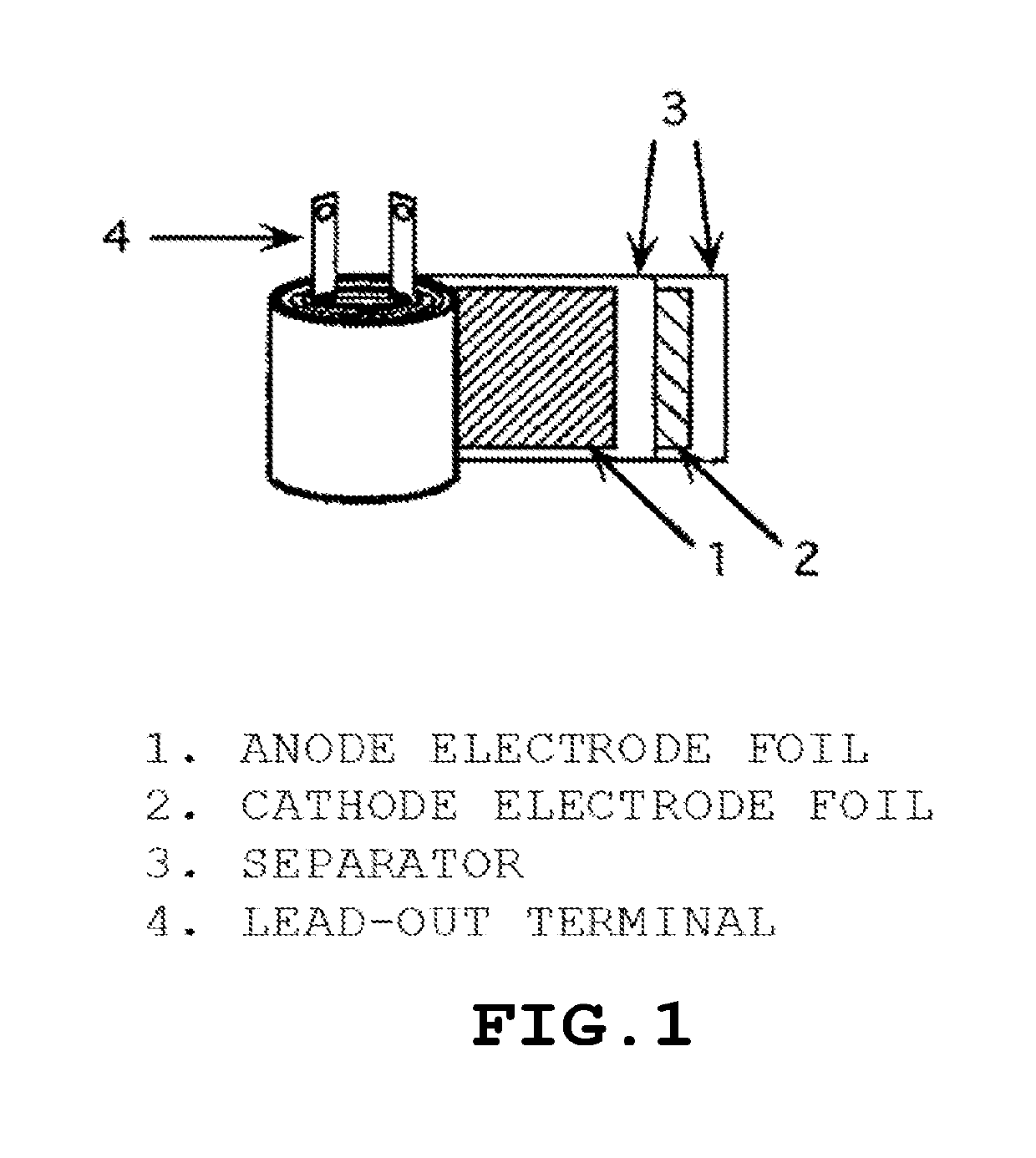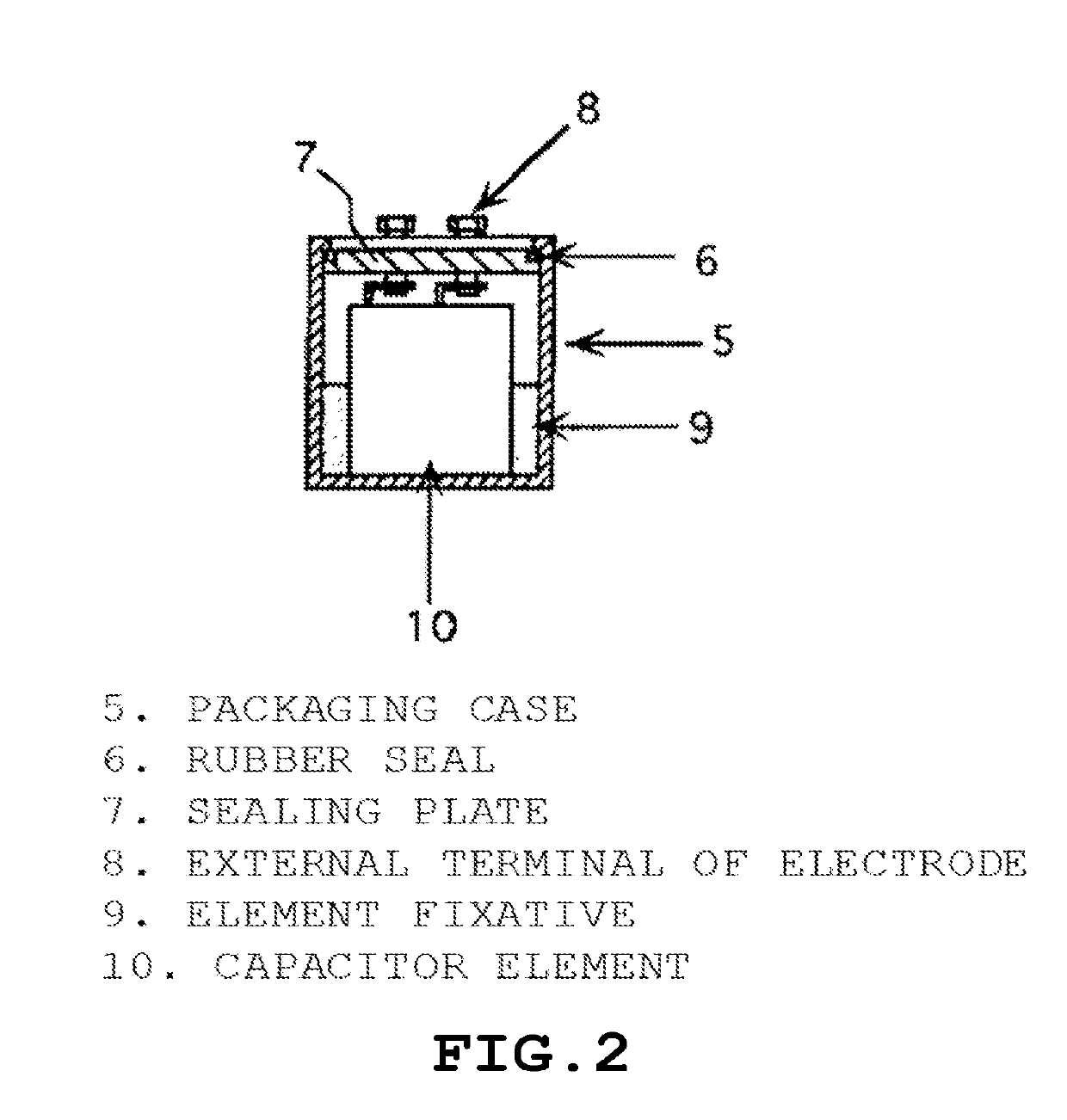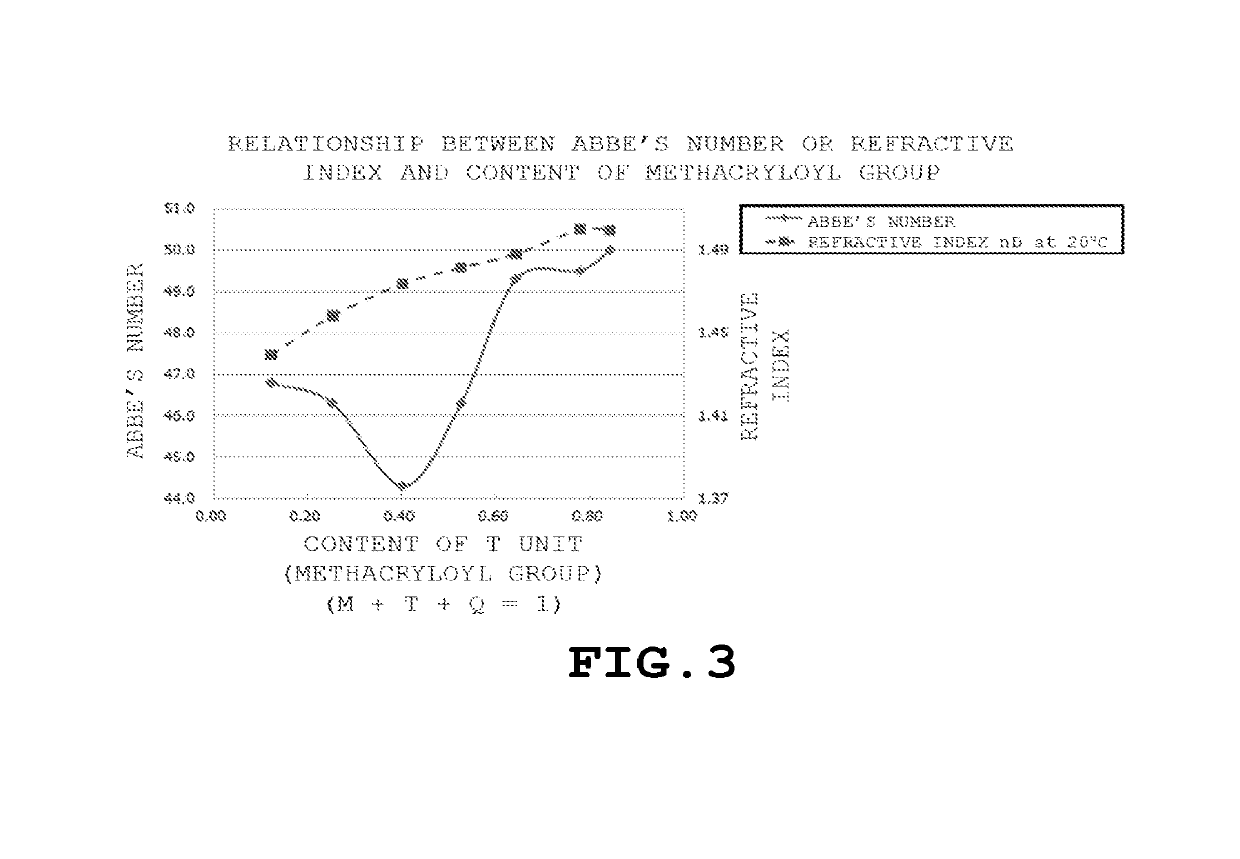Polyorganosiloxane, polyorganosiloxane composition, cured product, polyorganosiloxane-containing electrolytic solution for electrolytic capacitor, and electrolytic capacitor using same
a polyorganosiloxane and composition technology, applied in the direction of capacitors, basic electric elements, electrical equipment, etc., can solve the problems of high refractive index, high abbe's number, and difficulty in satisfying both high refractive index and high abbe's number, and achieve the enhancement of mechanical characteristics of cured products, reduce linear expansion coefficient, and large effect on the viscosity of polyorganosiloxan
- Summary
- Abstract
- Description
- Claims
- Application Information
AI Technical Summary
Benefits of technology
Problems solved by technology
Method used
Image
Examples
examples
[0331]Hereinafter, the present invention will be specifically described with reference to Examples, but the present invention is not intended to be limited thereto. Materials used in Examples and measurement methods of evaluation items are as follows. In Examples, “part(s)” and “%” are on a mass basis, unless particularly noted.
Evaluation I: Examples 1-1 to 1-5 and Comparative Examples 1-1 to 1-6
[0332][Measurement Methods]
[0333]1. Measurement of Amount of Reactive Functional Group in Polyorganosiloxane
[0334]Weighed was 50 mg of a polyorganosiloxane for measurement, and 15 mg of toluene was added and precisely weighed as an internal standard. Furthermore, 1 g of deuterochloroform was placed and dissolved, and Relaxation Delay in 400 MHz 1H-NMR (AL-400 manufactured by JEOL Ltd.) was set to 20 seconds for measurement. The ratio of the signal intensity of each component and the signal intensity of toluene as the internal standard, and the values weighed were used to calculate the conten...
synthesis example 3-1
[Synthesis Example 3-1] Polyorganosiloxane 12
[0540]After 2.6 parts by weight of hexamethyldisiloxane, 9.16 parts by weight of 1,3-divinyltetramethyldisiloxane, and 8.24 parts by weight of methyl silicate MS-51 were dissolved in a mixed solvent of 10.0 parts by weight of toluene and 10.0 parts by weight of methanol, a mixture of 5.10 parts by weight of 1 N hydrochloric acid and 2.55 parts by weight of methanol was added, and stirred at 40° C. for 4 hours. The resultant was diluted with 17.5 parts by weight of heptane, and thereafter washed with demineralized water. The solvent was distilled off at 76° C. under a reduced pressure of 15 Torr by use of a rotary evaporator until distillation of the solvent was not visually observed. Subsequently, the resultant was heated at 110° C. under a reduced pressure of 0.15 torr for 2 hours, thereby providing “polyorganosiloxane 12”.
[0541]“Polyorganosiloxane 12” was subjected to 1H-NMR by the same method as the method described in [Measurement met...
synthesis example 3-2
[Synthesis Example 3-2] Polyorganosiloxane 13
[0542]After 74 parts by mass of 1,1,3,3-tetramethyldisiloxane and 95 parts by mass of methyl silicate MS-51 were dissolved in a mixed solvent of 84 parts by mass of toluene and 84 parts by mass of methanol, a mixture of 58 parts by mass of 1 N hydrochloric acid and 58 parts by mass methanol was added and stirred at 30° C. for 3 hours. Thereafter, the solvent was distilled off and a product was filtered, thereby providing “polyorganosiloxane 13”.
[0543]“Polyorganosiloxane 13” obtained was subjected to measurement of 1H-NMR in the same manner as in Synthesis Example 3-1, and was confirmed to be a hydrosilyl group-containing polyorganosiloxane. The chart in measurement is illustrated in FIG. 6.
PUM
| Property | Measurement | Unit |
|---|---|---|
| viscosity | aaaaa | aaaaa |
| viscosity | aaaaa | aaaaa |
| refractive index | aaaaa | aaaaa |
Abstract
Description
Claims
Application Information
 Login to View More
Login to View More - R&D
- Intellectual Property
- Life Sciences
- Materials
- Tech Scout
- Unparalleled Data Quality
- Higher Quality Content
- 60% Fewer Hallucinations
Browse by: Latest US Patents, China's latest patents, Technical Efficacy Thesaurus, Application Domain, Technology Topic, Popular Technical Reports.
© 2025 PatSnap. All rights reserved.Legal|Privacy policy|Modern Slavery Act Transparency Statement|Sitemap|About US| Contact US: help@patsnap.com



